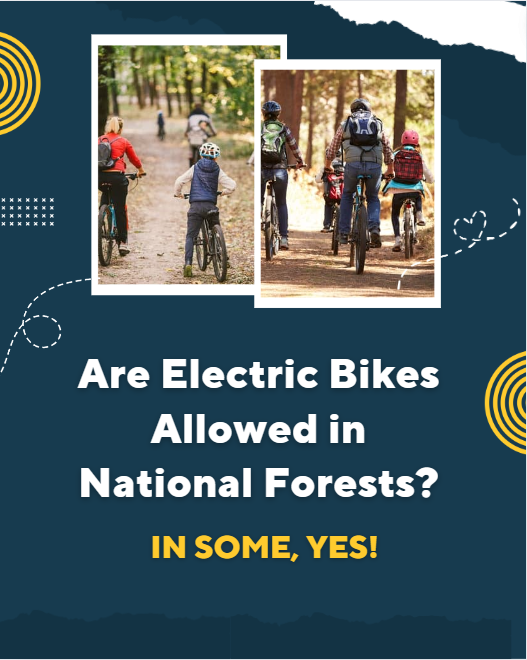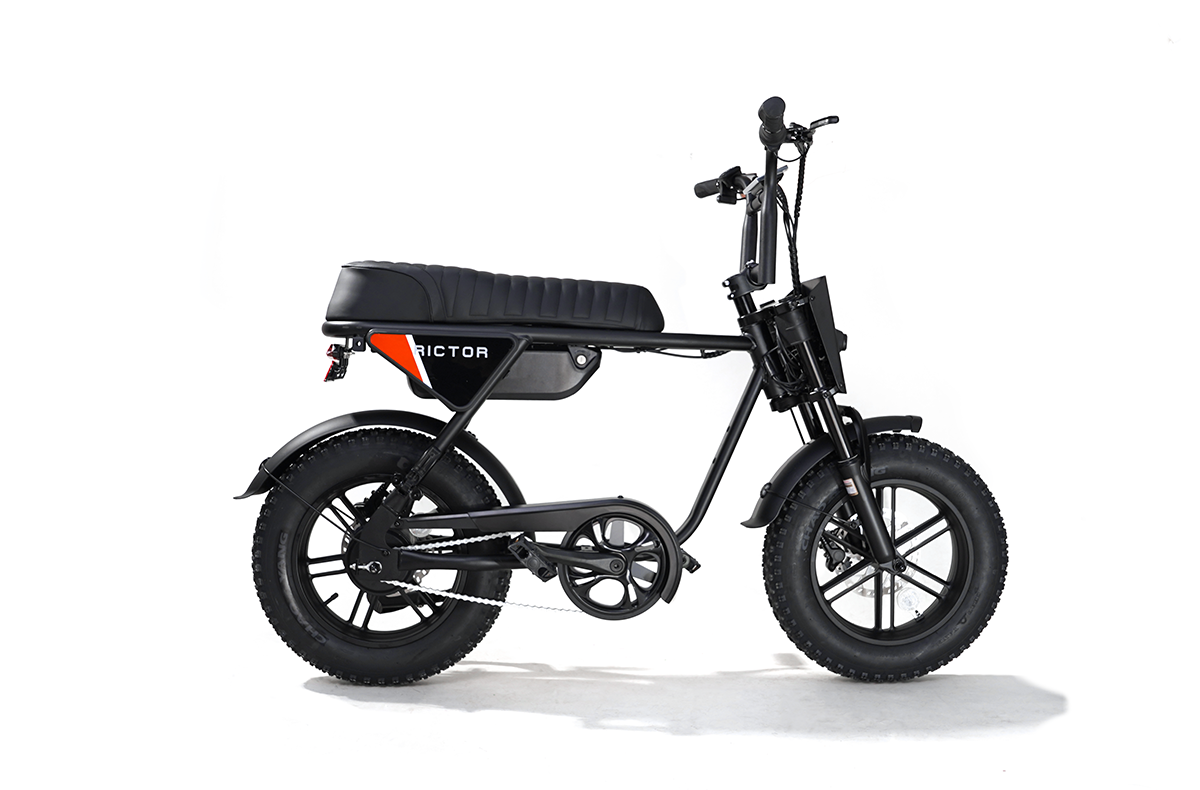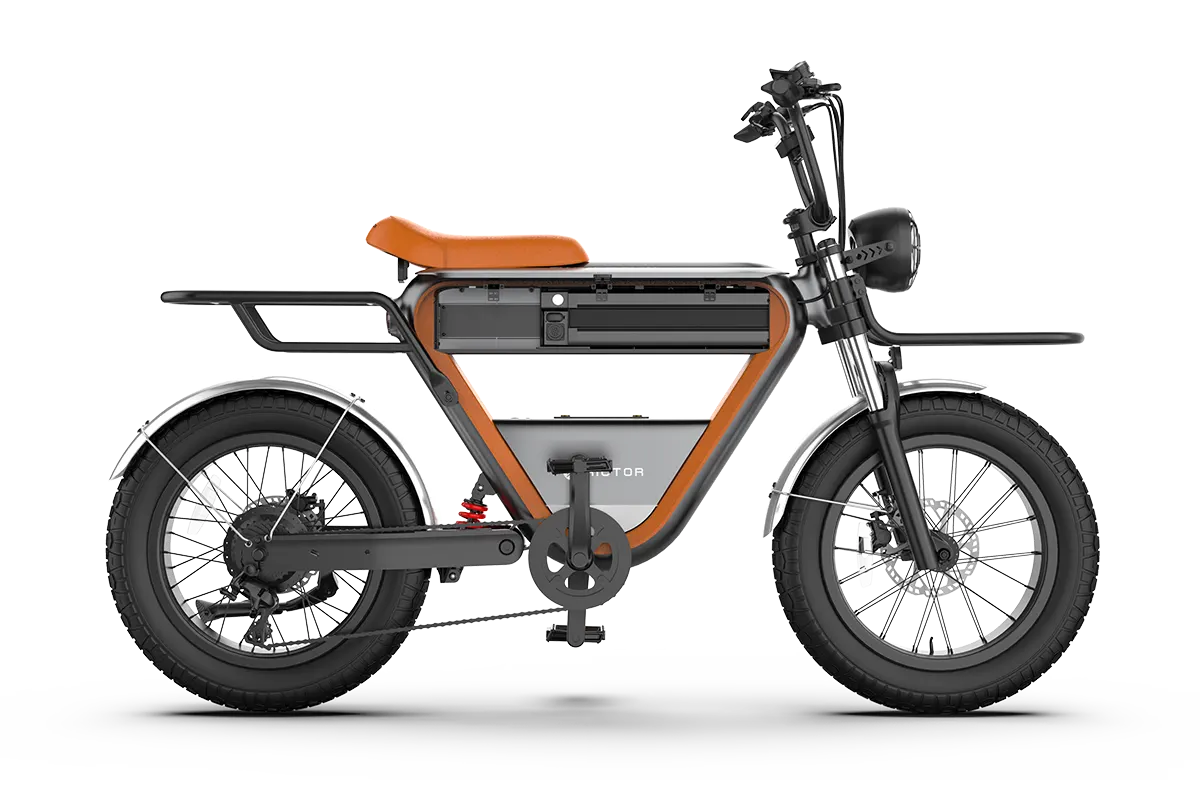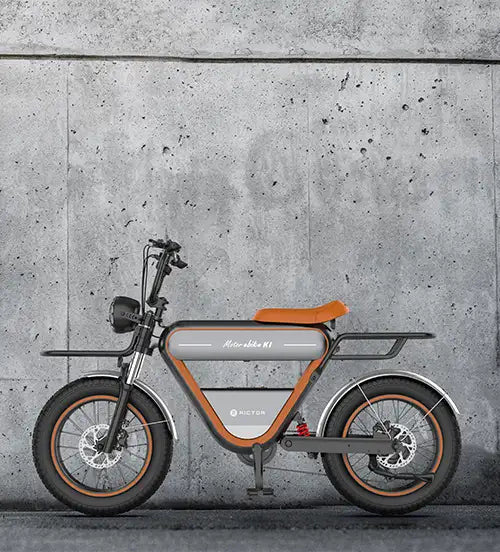
Are Electric Bikes Allowed in National Forests? (In Some, Yes!)
You know that feeling when you’re just cruising on your bike, the world slips away, and it’s just you, the road, and the scenery. 🚵🏻♀️
It’s like a kind of meditation. Doing that on an electric bike—no sweat, just smooth sailing through some of the most beautiful landscapes you’ve ever seen. 🌇
Are there national forests where you can enjoy this tranquil e-bike experience?🌳
Yep, keeo scolling! You will know!
National Forests and Their Regulations
National forests in the United States are managed by the U.S. Forest Service, a division of the Department of Agriculture.
These public lands cover over 193 million acres across the country and are designated for multiple uses, including recreation, conservation, and resource extraction.
Given this diversity of uses, regulations governing activities within national forests can be complex and vary significantly between different forests and activities, such as hiking, horseback riding, and motorized vehicle use.
When it comes to e-bikes, their classification and the rules surrounding their use can differ significantly depending on the forest and the specific trails within that forest.
This variance is due to the Forest Service's overarching goal of balancing public enjoyment with environmental conservation and resource management.
Electric Bike Classifications
E-bikes are generally classified into three categories:
-
Class 1: These e-bikes are equipped with a motor that assists the rider only while they are pedaling, and the motor ceases to provide assistance once the bike reaches 20 mph.
-
Class 2: E-bikes (Like Rictor K1) in this class have a throttle-actuated motor, which can propel the bike without the rider pedaling, but the motor stops providing assistance at 20 mph.
-
Class 3: These are similar to Class 1 e-bikes but can reach speeds of up to 28 mph with motor assistance.
The classification of your e-bike matters because different national forests may allow certain classes on specific trails while prohibiting others.
Generally, Class 1 e-bikes have the broadest acceptance on trails where traditional bicycles are permitted, while Class 2 and Class 3 e-bikes may face more restrictions due to their higher speeds and throttle operation.
SEE ALSO The RICTOR K1 is the BEST ALL AROUND EBike Under $2,500!
National Forests That Allow E-Bikes
The U.S. Forest Service manages over 193 million acres of public land, including nearly 160,000 miles of trails.
As e-bikes grow in popularity, many national forests have started to incorporate them into their trail systems.
However, the rules regarding e-bike access vary significantly depending on the forest and trail designation.
Currently, e-bikes are allowed on all Forest Service roads that are open to motorized vehicles.
This includes over 60,000 miles of motorized trails across the national forests and grasslands, which account for approximately 38% of all trails managed by the Forest Service.
These motorized trails are the most accessible for e-bike users, regardless of the e-bike class (Class 1, 2, or 3).
Challenges on Non-Motorized Trails
For non-motorized trails, the situation is more complex.
The U.S. Forest Service generally classifies all e-bikes as motorized vehicles, which means they are typically prohibited on non-motorized trails unless a specific reclassification has taken place.
This reclassification process involves a thorough environmental assessment, public engagement, and a formal update to the Travel Management Plan (TMP) of the forest in question.
However, several national forests have begun to allow Class 1 e-bikes on specific non-motorized trails after completing the necessary legal and environmental steps.
This development, though still relatively new, indicates a shift towards more inclusive access for e-bikes.
Despite this, not all forests have embraced the change.
In areas like Boulder County within the Arapaho and Roosevelt National Forests, no local ranger district has yet initiated the process to assess e-bike use on non-motorized trails.
Specific Examples of E-Bike-Friendly National Forests
Some specific national forests where e-bikes are either permitted or where initiatives are underway to explore their use include:
-
Arapaho and Roosevelt National Forests: Currently under review for potential e-bike access on specific non-motorized trails.
-
Sierra National Forest (California): Allows e-bikes on designated motorized trails and roads.
-
White River National Forest (Colorado): Permits e-bikes on motorized trails and is considering expanding access to certain non-motorized trails.
-
Pisgah National Forest (North Carolina): E-bikes are allowed on certain motorized trails and roads that are open to all motorized vehicles. This forest has been proactive in managing recreational use, including e-bikes, to ensure the preservation of its natural resources.
-
San Bernardino National Forest (California): E-bikes are permitted on several motorized trails and roads within the San Bernardino National Forest. The forest management has also been involved in discussions to expand e-bike access to more areas, particularly for Class 1 e-bikes.
-
Coconino National Forest (Arizona): This forest allows e-bikes on designated motorized trails and roads. Coconino National Forest is known for its diverse terrain, offering a range of riding experiences for e-bike users.
-
Deschutes National Forest (Oregon): E-bikes are allowed on specific motorized trails and roads. The forest management has been working on policies to potentially expand e-bike access, reflecting the growing popularity of e-bikes in the region.
-
Mt. Hood National Forest (Oregon): Similar to other national forests, Mt. Hood permits e-bikes on designated motorized trails and roads. This forest is actively reviewing its trail system to determine where e-bikes can be safely and responsibly integrated.
-
Chattahoochee-Oconee National Forests (Georgia): In these forests, e-bikes are allowed on motorized trails and roads, with forest managers evaluating the possibility of expanding access to additional trails in the future.
📌It's crucial to note that e-bikes are generally prohibited in designated Wilderness areas within national forests.
These areas are protected under the Wilderness Act of 1964, which strictly limits motorized access to preserve their natural condition.
Many national forests are in the process of evaluating e-bike access on non-motorized trails, particularly for Class 1 e-bikes.
This process involves public engagement and environmental assessments, which means that more trails may become available for e-bike use as these evaluations are completed.
Conclusion
As the sun dips below the horizon, there’s nothing quite like biking through the beautiful scenery, feeling the freedom and calm it brings. Stay on the right path, enjoy your ride!🌅🚴♂️
FAQs
Are there any permits required to ride an e-bike in national forests?
Generally, no special permit is required for riding an e-bike on designated motorized trails in national forests. However, if you're planning a large group ride or event, you may need to obtain a permit. It's best to consult with the local forest service office for specific regulations.
Can I camp with my e-bike in national forests?
Yes, you can camp in national forests with your e-bike. However, you should follow Leave No Trace principles and camp only in designated areas. Additionally, be mindful of battery charging options, as remote areas may not have power access.
What are the rules for e-bike use on multi-use trails in national forests?
Multi-use trails in national forests can be shared by hikers, horseback riders, and cyclists. The rules for e-bike use on these trails can vary widely. Some forests allow Class 1 e-bikes on these trails, while others restrict all e-bikes. Checking local regulations is crucial before you ride.
💡 Explore More Here!
- Are e-bikes waterproof? the truth might surprise you!we still have owesome recommendation
- Your handy checklist for buying a new e-bike, don't miss your best bike
- Quick Gearshift Tips! Easy Guide for Beginners on 7 Speed Bikes
- 9 Benefits to ride electric bike, ditch the stationary bike and ride free
- NEW Law is Coming! Do you need a license for electric bike?




